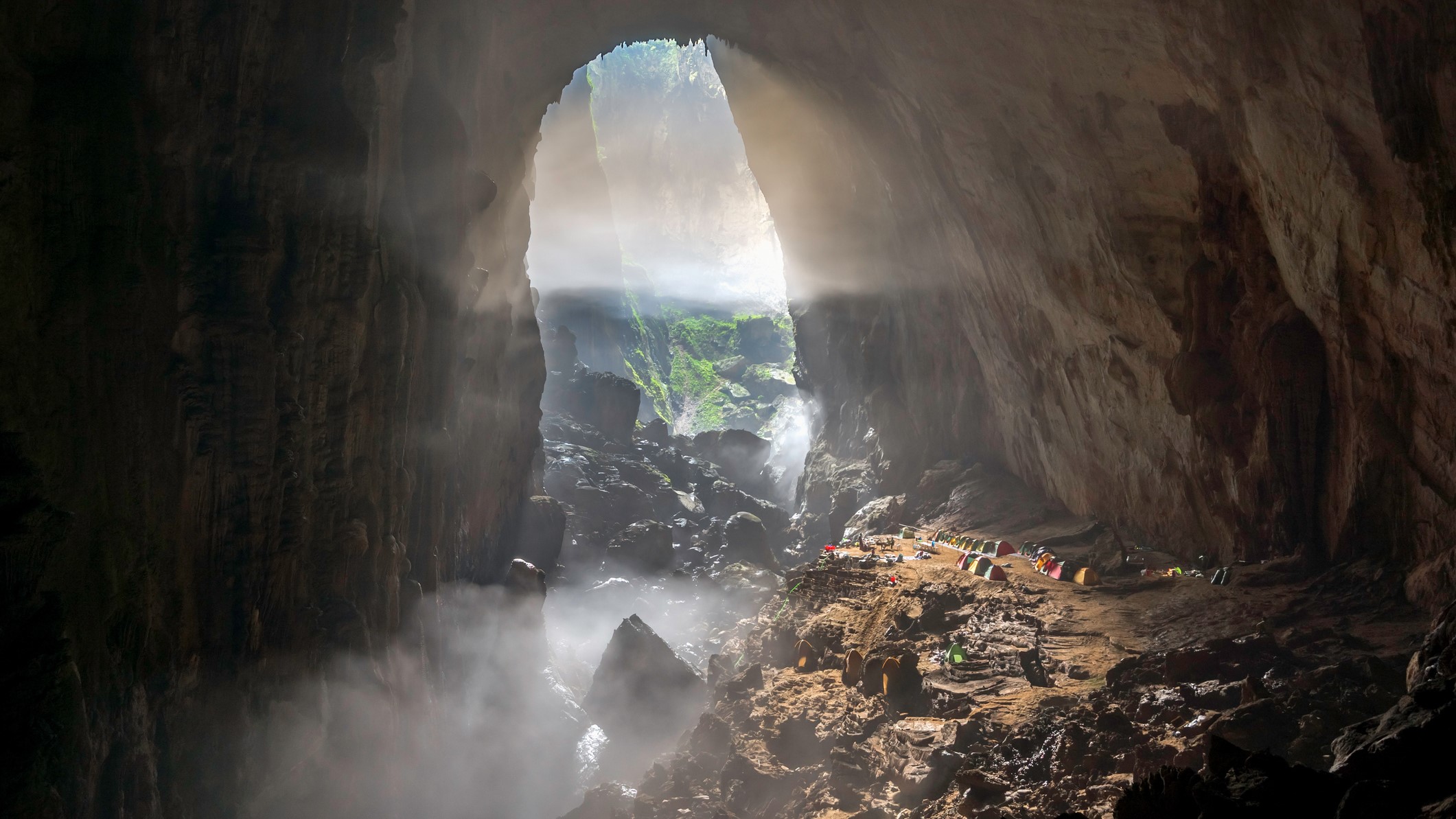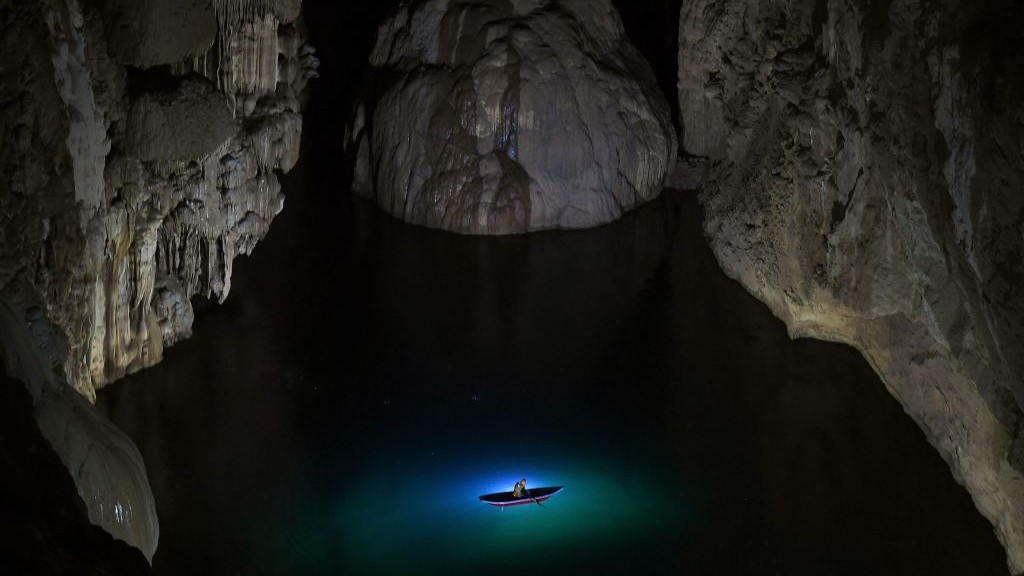Hang Son Doong: The world's biggest cave, so 'outrageous in size' it fits 2 jungles and the 'Great Wall of Vietnam'
Vietnam's Son Doong cave is so large, you could squeeze 15 Great Pyramids of Giza inside it and fly a Boeing 747 airplane through some of its passages.

Name: Hang Son Doong
Location: Quang Binh Province, Vietnam
Coordinates: 17.54696024669416, 106.14398574081777
Why it's incredible: The cave is the biggest in the world and contains two jungles.
Hang Son Doong is the world's largest known cave, with enough space in some of its passages to fly a Boeing 747 airplane through them. The limestone cavern sits beneath a lush jungle in Vietnam's Phong Nha-Ke Bang National Park and hosts primeval forests that thrive thanks to giant "skylights" in the rock.
Hang Son Doong cave — the name means "Mountain River" — is young compared with other limestone caves. It formed 2 to 3 million years ago inside the biggest limestone massif in Asia, a colossal block of rock more than 400 million years old that was born from the compressed shells and skeletons of ancient sea animals. Two rivers — the Rao Thuong and the Khe Ry — coursed through cracks in the limestone and eroded the rock, forming a giant tunnel in the massif that only recently came to be known as Son Doong.
Related: China's 'heavenly pits': The giant sinkholes that have ancient forests growing within
Ho Khanh, a resident of Vietnam, discovered the cave by chance in 1990 while hunting in the jungle. "He felt a blast of wind and heard the rush of a river inside," Howard Limbert, a British cave explorer and technical director at Oxalis Adventure, a company that operates tours of Son Doong, told CNN. "But after he left, he couldn't find it again, because it's surrounded by foliage."
Years later, Khanh managed to retrace his steps. In 2009, he led a caving team from the British Cave Research Association that included Limbert to the cave's entrance. "We realized right away that it was major," Limbert said.
The team surveyed Son Doong and found it was the largest natural cave ever recorded. Their measurements indicated a total cave volume of 1.35 billion cubic feet (38.5 million cubic meters), which is spacious enough to fit nearly 15 Great Pyramids of Giza.
But researchers recently discovered the cave is even bigger than that. A diving expedition in 2019 revealed that Son Doong is connected to another cave called Hang Thung through an underwater tunnel. This link adds 57 million cubic feet (1.6 million cubic meters) to the cave's volume, or two-thirds of a Great Pyramid.
Sign up for the Live Science daily newsletter now
Get the world’s most fascinating discoveries delivered straight to your inbox.

"It would be like someone found a lump on top of Mount Everest, making it another 1,000 meters [3,280 feet] higher," Limbert said. "Any cave in the world will be able to fit comfortably inside Son Doong when it's connected — it's just outrageous in size."
Son Doong is home to one of the world's tallest stalagmite, a monster pillar dubbed the "Hand of Dog" measuring 260 feet (80 m) high. The cave is divided into three sections — the entrance, the fossil passages and the muddy Passchendaele Passage (named after the World War I Battle of Passchendaele, which soldiers fought in mud-filled trenches) — that each boast spectacular formations.
As their names suggest, the fossil passages are filled with the remains of sea creatures that once inhabited an ancient sea in what is now central Vietnam. The Passchendaele Passage is home to a 300-foot (90 m) wall of calcite known as the Great Wall of Vietnam, which cave explorers only managed to scale on their second visit to the cave in 2010.
Finally, at the heart of Son Doong, the limestone ceiling collapsed long ago to form two sinkholes that allow beams of light to shine into the cave. And under these "skylights," two jungles have thrived for thousands of years.

Sascha is a U.K.-based staff writer at Live Science. She holds a bachelor’s degree in biology from the University of Southampton in England and a master’s degree in science communication from Imperial College London. Her work has appeared in The Guardian and the health website Zoe. Besides writing, she enjoys playing tennis, bread-making and browsing second-hand shops for hidden gems.










